Affiliate links on Android Authority may earn us a commission. Learn more.
Apple iPhone 14 buyer's guide: Specs, pricing, availability, and more
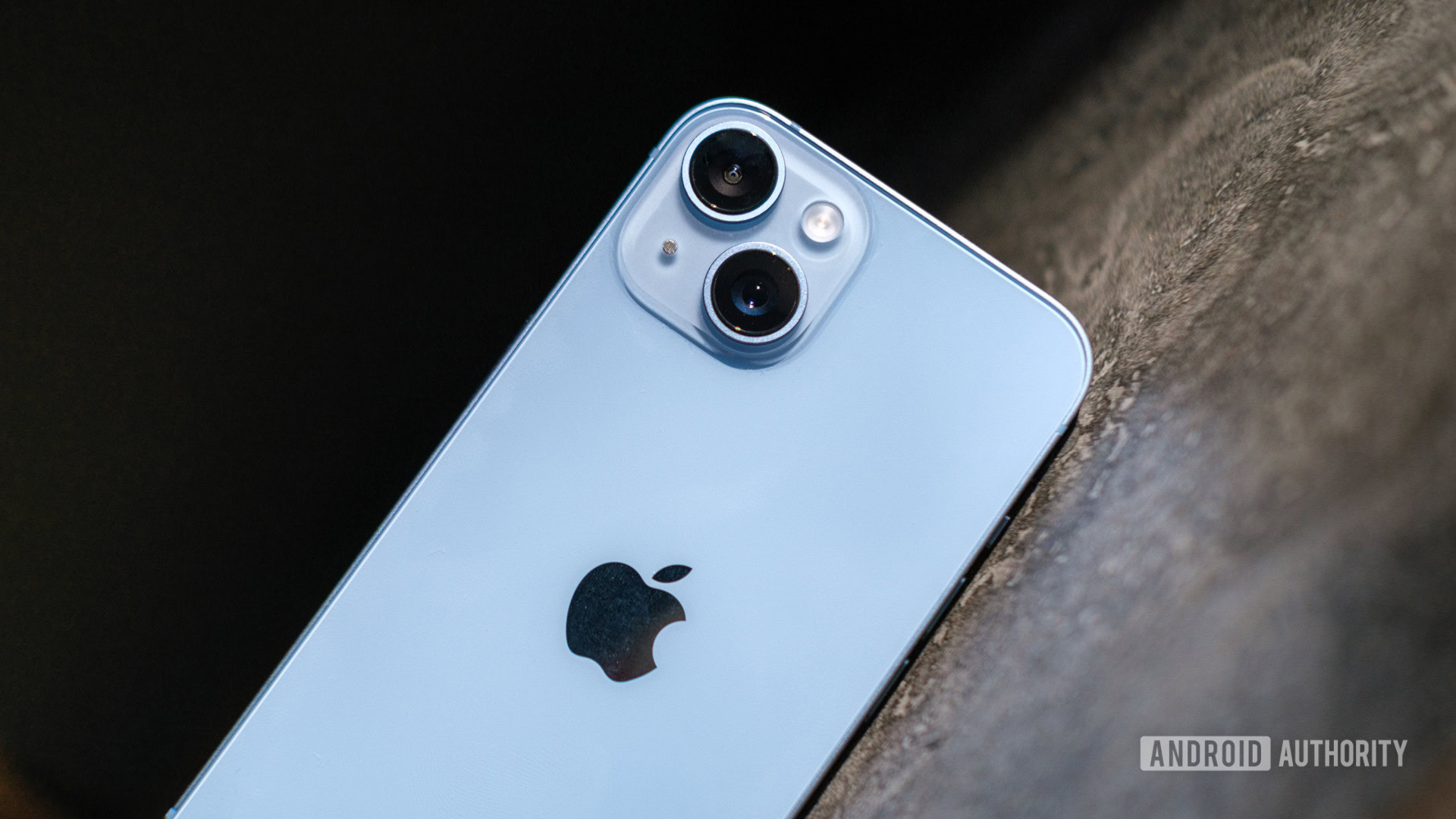
The Apple iPhone 14 series consists of four phones, as expected. However, Apple has made a lot of changes this time around. It got rid of the Mini model, introduced the so-called Dynamic Island, and widened the gap between the regular and Pro models.
So, what are the differences between the four phones, which one should you buy (if any), and what are some of the alternatives worth checking out? These are just a few of the questions we’ll answer in this Apple iPhone 14 series buyer’s guide.
Editor’s note: This Apple iPhone 14 buyer’s guide is current as of March 2023. We will update it with new content regularly, so make sure to bookmark this page to stay up to date with all the latest.
Apple iPhone 14 series at a glance
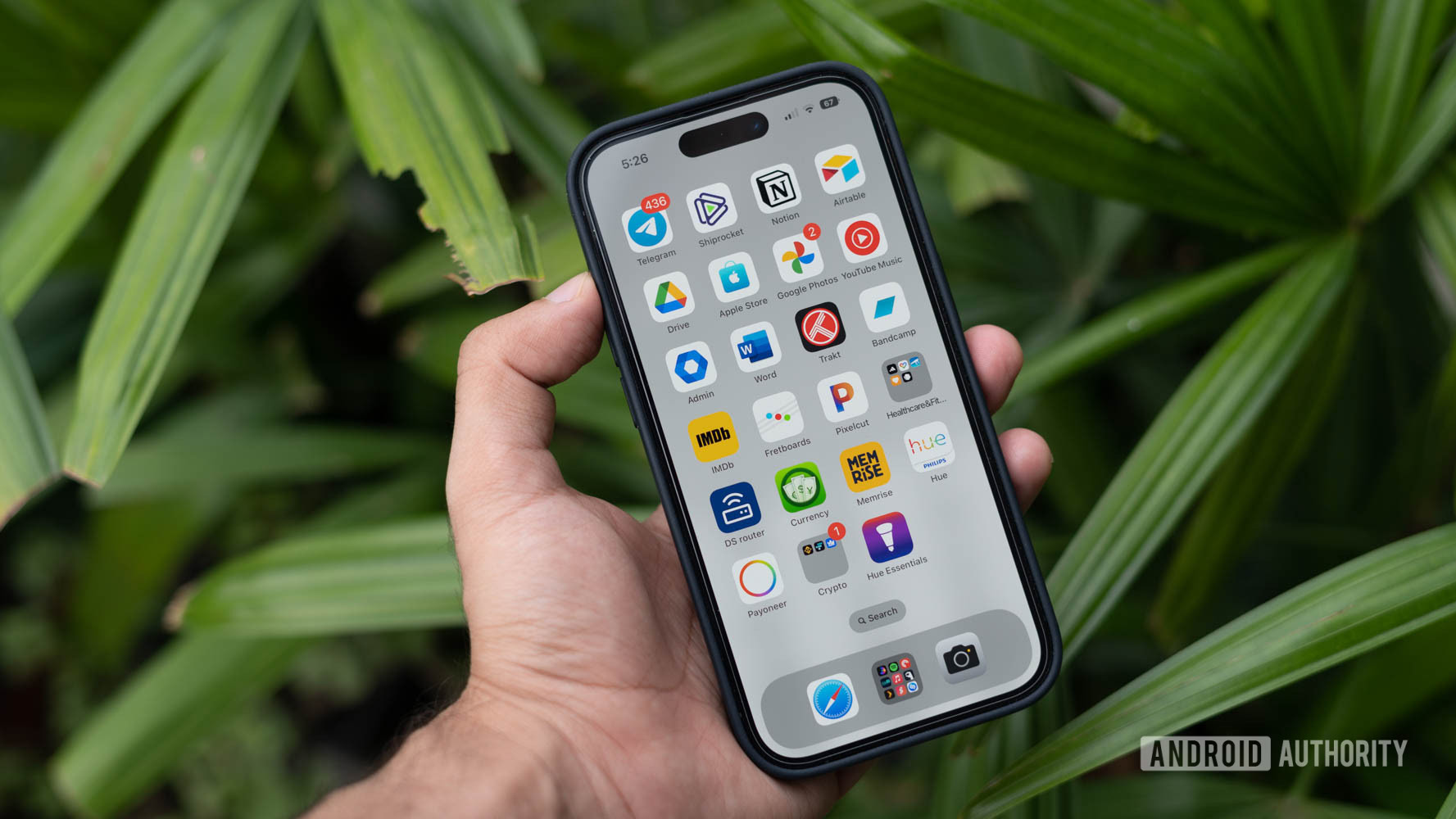
Apple announced the iPhone 14 series during its Far Out event on September 7, 2022. The series consists of four phones: the iPhone 14, iPhone 14 Plus, iPhone 14 Pro, and iPhone 14 Pro Max. Three of them went on sale on September 16, while the iPhone 14 Plus was made available on October 9.
The iPhone 14 Pro Max ($1,099) is the best phone in the series. It’s a minor upgrade over its predecessor, sporting the faster A16 Bionic chipset, an improved camera system, an always-on display, and the Dynamic Island, which is a pill-like camera cutout that has a few tricks up its sleeve — more on that later.
The iPhone 14 Pro ($999) is identical to the Max model in many ways. It has the same chipset, storage configurations, cameras, and other bells and whistles. The main difference between the two is that the iPhone 14 Pro is smaller, offering a 6.1-inch display as opposed to the iPhone 14 Pro Max’s 6.7-inch screen. It also has a smaller battery and a cheaper price tag.
Next up is the iPhone 14 Plus ($899), which offers the big-screen experience of the iPhone 14 Pro Max but ditches a lot of features in exchange for a lower price. It surprisingly comes with the A15 Bionic chipset, which powers last year’s iPhone 13 series. It’s very similar to the iPhone 13 Plus, sporting two cameras, a notch, and the same battery.
Then there’s the regular iPhone 14 ($799), which is more or less the same as the iPhone 14 Plus. You get the same cameras, chipset, and even the notch. But it does come with a smaller display, a smaller battery, and, therefore, a smaller footprint overall.

Updated 12MP camera
Large-display base model iPhone

Upgraded main camera
Dynamic Island

Are the iPhone 14 phones worth buying?
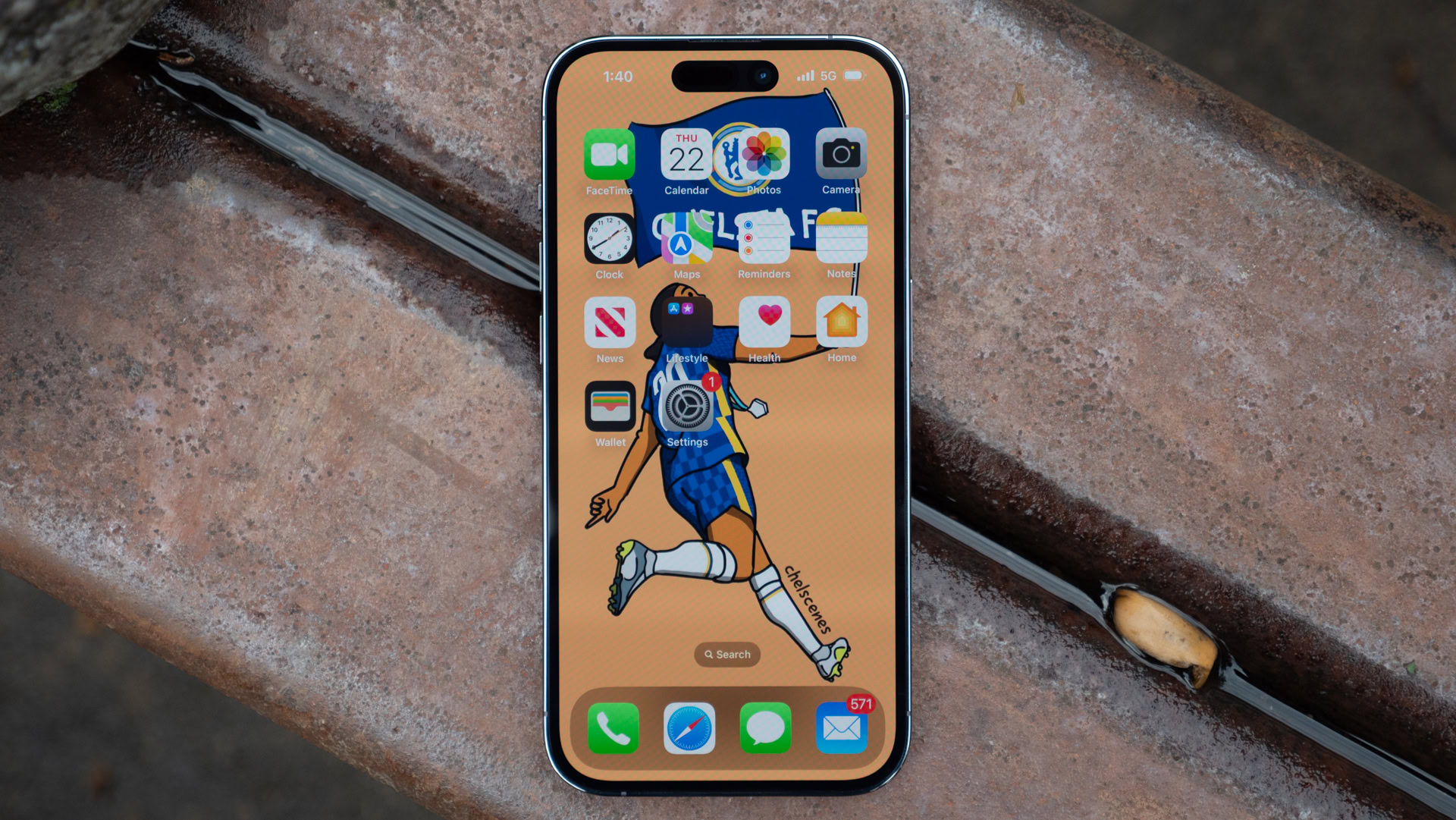
If you already have one of last year’s iPhones, there’s really no point in upgrading to the iPhone 14 series. We don’t think it’s worth the money since the changes are minimal. That especially goes for the iPhone 14 and 14 Plus, which even sport the same chipset as their predecessors.
Although the Pro models offer a bit more this year, featuring Apple’s Dynamic Island and a new 48MP primary sensor, we still don’t think it’s worth spending at least $1,000 to upgrade from the iPhone 13 Pro models.
But if you have an older phone, whether it’s an iPhone or an Android, and are interested in the new iPhone 14 series, then upgrading makes more sense. At least if you’re considering the iPhone 14 Pro or Pro Max. These two handsets are worth buying since you’re getting high-end specs, great cameras, the best software update promise in the industry, and much more. They are not perfect — no phone ever is — but they will satisfy the needs of the vast majority of users.
The story is a bit different with the iPhone 14 and 14 Plus. While they are great phones overall and have plenty to offer, they have a number of drawbacks that make them a little bit harder to recommend to a wider audience. Because of their mediocre charging capabilities, the lack of a pixel-binning camera upgrade, and just 60Hz displays, the phones feel like they’re two or even three generations behind the competition. You’ll probably still enjoy the overall experience if you’re an Apple fan, but we think that Android has better options at this price point.
What experts are saying about the iPhone 14 series
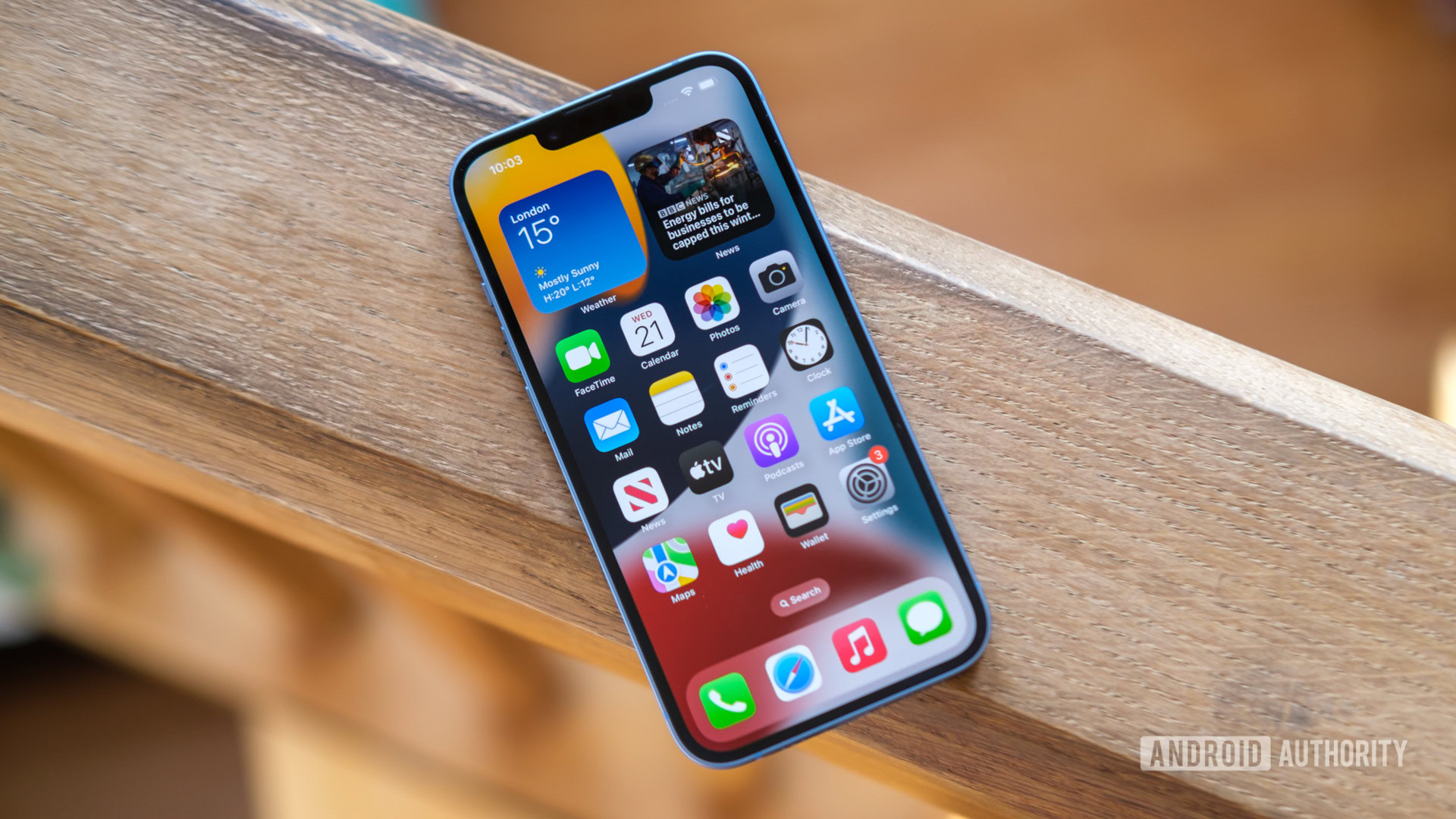
We’re very familiar with what the new iPhones have to offer since we reviewed the iPhone 14 and the iPhone 14 Pro.
We think the iPhone 14 is the best entry-level iPhone flagship ever made. The build quality is brilliant, the battery will get you through the day with ease, and the cameras are quite capable, offering superb videography features. However, it’s a tough handset to recommend to a wider audience since it’s a minor upgrade over its predecessor and falls behind the Android competition in many ways.
For example, it only sports two rear cameras, so you’re not getting a telephoto lens. The display’s refresh rate only comes in at 60Hz, while 120Hz is almost the standard for Android flagships, with some even offering 165Hz. The charging is also quite slow, while the notch gives the phone a dated look, especially now that the Pro models have a camera cutout called Dynamic Island.
The story is the same for the iPhone 14 Plus. Although we didn’t review it since it’s not yet available, it’s basically the same phone as the iPhone 14 but with a larger display and battery.
The Dynamic Island gives the iPhone 14 Pro models a slightly more modern look.
The iPhone 14 Pro and Pro Max are obviously the more interesting phones in the series. The rear cameras have been upgraded, the new A16 Bionic chip can handle just about any task you throw at it, and the build quality is second to none.
Then there’s the new Dynamic Island. It gives the phones a more modern look and provides interesting interactions with various apps. But as we noted in our review, it best works with Apple’s first-party apps for now, so its usability is limited. However, it’s hard not to see it becoming a standard feature down the road for all iPhones.
As expected, the iPhone 14 Pro has a few drawbacks, including a downgraded battery life compared to its predecessor and slow charging. However, it is still by far the best flagship Apple has ever produced.
What other reviewers from around the web think
To give you the best overview of Apple’s flagship series, we looked at what reviewers from other publications had to say about the iPhone 14 phones.
- Pocket-lint’s Britta O’Boyle believes that Apple is playing it safe with its iPhone 14 phones, both in terms of hardware and design. The phone looks the same as its predecessor, and while there are a few hardware upgrades on board, the difference is minimal. Britta notes that more than any other year in the past, there’s a much stronger argument to buy an iPhone 14 Pro model this year.
- Tech Radar’s Lance Ulanoff was impressed with the iPhone 14 Pro in his review, saying that it just “may be the perfect iPhone.” The device comes with Apple’s Dynamic Island, the new AOD display, and at the same time, it’s about the right size with its 6.1-inch display. However, Lance did point out a few cons of the phone, including a premium price and the lack of a USB-C port.
- Tom’s Guide’s Mark Spoonauer reviewed the iPhone 14 Pro Max and had great things to say about it. He believes it’s the best phone money can buy thanks to its clever Dynamic Island, powerful cameras, always-on display, and excellent battery life. He didn’t like the slow 20W charging, though, and believes that the lack of a SIM card slot in the US is not something everyone will enjoy. Additionally, he feels the phone is a bit big and heavy.
Apple iPhone 14 series specs
| Specs | Apple iPhone 14 Pro/iPhone 14 Pro Max |
|---|---|
Display | 6.1-inch/6.7-inch Super Retina XDR display 2,556 x 1,179 resolution 120Hz refresh rate 2,000 nits peak brightness Dynamic Island |
Processor | Apple A16 Bionic |
Storage | 128GB 256GB 512GB 1TB |
Battery | 3,200mAh/4,323mAh Video playback: Up to 23 hours Audio playback: Up to 75 hours Charging: Up to 50% charge in around 30 minutes with 20W adapter or higher 15W MagSafe wireless charging |
Cameras | Rear: 48MP Main (24mm, ƒ/1.78 aperture, sensor‑shift optical image stabilization) 12MP Ultrawide (13mm, ƒ/2.2 aperture and 120° field of view, six‑element lens) 12MP 3x Telephoto (77mm, ƒ/2.8 aperture, OIS, six‑element lens) Front: 12MP (ƒ/1.9 aperture, six-element lens) |
Connectivity | 5G (sub‑6 GHz and mmWave) with 4x4 MIMO Gigabit LTE with 4x4 MIMO and LAA Wi‑Fi 6 (802.11ax) with 2x2 MIMO Bluetooth 5.3 Ultra Wideband chip NFC |
Sensors | Face ID LiDAR Barometer High dynamic range gyro High-g accelerometer Proximity sensor Dual ambient light sensors |
Software | iOS 16 |
Durability | IP68 Ceramic Shield Stainless steel frame |
Dimensions and weight | iPhone 14 Pro: 147.5 x 71.5 x 7.85mm, 206g iPhone 14 Pro Max: 160.7 x 77.6 x 7.9mm, 240g |
Colors | Space Black Silver Gold Deep Purple |
Safety | Emergency SOS via satellite Crash Detection |
| Specs | Apple iPhone 14/iPhone 14 Plus |
|---|---|
Display | 6.1 inches/6.7 inches Super Retina XDR display 2,532 x 1,170/ 2,778 x 1,284 1,200 nits peak brightness Fingerprint-resistant oleophobic coating |
Processor | Apple A15 Bionic |
Storage | 128GB 256GB 512GB |
Battery | 3,279mAh/4,323mAh Video playback: Up to 20 hours/Up to 26 hours Audio playback: Up to 80 hours/Up to 100 hours Fast-charge capable: Up to 50% charge in around 30 minutes 20W adapter or higher (available separately) |
Cameras | REAR 12MP Main: 26 mm, ƒ/1.5 aperture, sensor‑shift optical image stabilization 12MP Ultrawide: 13 mm, ƒ/2.4 aperture and 120° field of view, five‑element lens FRONT 12MP ƒ/1.9 aperture |
Connectivity | 5G (sub‑6 GHz and mmWave) with 4x4 MIMO8 Gigabit LTE with 4x4 MIMO and LAA8 Wi‑Fi 6 (802.11ax) with 2x2 MIMO Bluetooth 5.3 Ultra Wideband chip NFC |
Sensors | Face ID Barometer High dynamic range gyro High-g accelerometer Proximity sensor Dual ambient light sensors |
Software | iOS 16 |
Durability | IP68 Ceramic Shield |
Dimensions and weight | iPhone 14: 146.7 x 71.5 x 7.80mm, 172 grams iPhone 14 Plus: 160.8 x 78.1 x 7.80, 203 grams |
Colors | Midnight Purple Starlight (PRODUCT)RED Blue |
Safety | Emergency SOS via satellite Crash Detection |
Apple iPhone 14 performance
If you want as much power as possible, you’ll have to go with either the iPhone 14 Pro or the 14 Pro Max. Both come with Apple’s latest A16 Bionic chipset under the hood that’s paired with 6GB of RAM.
The phones are powerful enough to handle just about any task you throw at them. We had no issues with stuttering during our testing, even when running and switching between multiple apps. It is true that the handset can get hot at times, but it also cools down very quickly when not in use.
The A16 Bionic is quite the upgrade over the iPhone 13’s SoC. The single-core Geekbench 5 score showed about an 8% improvement over the iPhone 13 Pro, while the multi-core score jumped by a more significant 14%.
If you go with the iPhone 14 or the 14 Plus, you’ll have to do with last year’s A15 Bionic chipset, which is a shame. However, it’s still an excellent chipset that can handle just about anything. We didn’t experience any issues while testing it. However, it’s not as fast as the newer model. Like the Pro versions, the iPhone 14 and 14 Plus sport 6GB of RAM.
Are the iPhone 14 cameras any good?
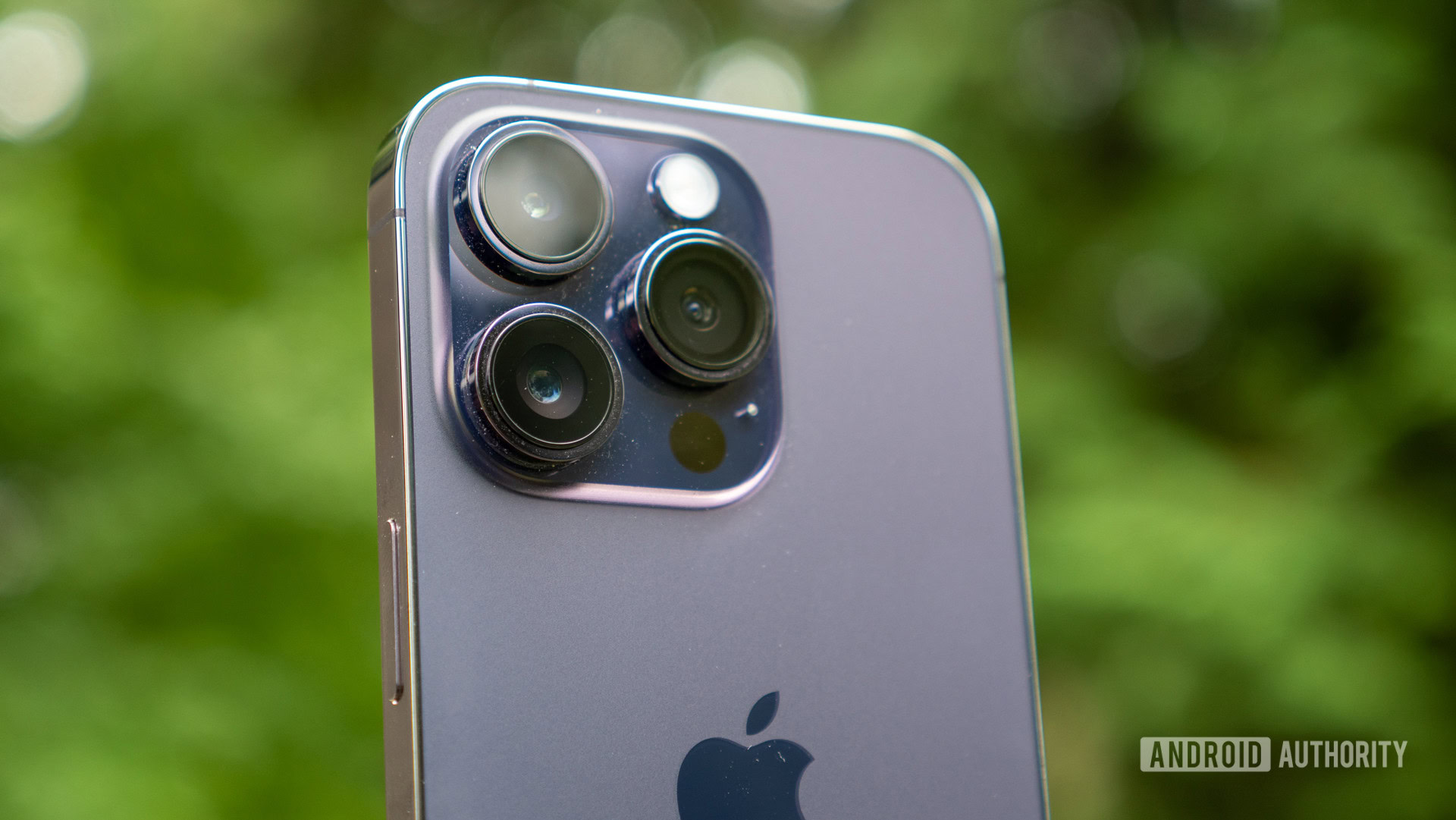
The iPhone 14 Pro and Pro Max have received a camera upgrade this year. There are still three rear cameras on board, but the resolution of the main sensor jumped from 12MP to 48MP. However, the images are binned down to 12MP by default. You can, however, take full 48MP pictures using ProRAW. The other two lenses on board are a 12MP ultrawide camera and a 12MP 3x telephoto.
In our review, the main camera had no issues capturing colors or details in well-lit scenarios. The transition from the primary camera to the ultrawide lens in daylight is smooth. The colors are consistent and the distortion is kept to a minimum. The telephoto lens does a pretty good job as well, so most people will be happy with the camera system overall.
However, portrait shots can be hit and miss, especially when taking photos of anything other than people. There’s also a bit of an issue with the ultrawide lean in low-light scenarios in some cases, as we’ve noticed some severe vignetting around the edges, with only the center of the image being lit up. For more detailed info, check our iPhone 14 Pro camera review.
The regular iPhone 14 and 14 Plus offer less in the camera department, with both featuring two rear shooters — a 12MP primary sensor and a 12MP ultrawide lens. The sample images taken are more or less the same as the ones produced by the iPhone 13, which isn’t necessarily a bad thing.
You get good-to-great-looking results most of the time; just don’t look too closely, as there are still common signs of oversharpening and noise. The cameras handle low light quite well, especially with Night Mode enabled.
However, portrait mode isn’t the best, as you often find rough or missed edges with both the rear and selfie cameras. There are some other issues that we address in our iPhone 14 camera review.
How is the iPhone 14’s battery life?
The iPhone 14 Pro comes with a 3,200mAh battery. Despite being slightly larger than that of its predecessor, the battery life is surprisingly worse. The phone will last you through the day, but don’t expect much more. In our testing, we averaged about four and a half to five hours of screen-on time, with up to another hour of idle usage. However, we did get the iOS 16.0.2 update during testing, which improved the battery life a bit, as it extended the screen-on time to six and a half hours with another two hours of the screen sitting idle.
The iPhone 14 Pro goes from zero to 100% in around 80 minutes.
The handset supports up to 27W charging that gets the battery to 50% in about 30 minutes and to 100% in roughly 80 minutes. If you want to skip the wires, you can try 15W MagSafe or 7.5W Qi wireless charging.
The larger Apple iPhone 14 Pro Max has a bigger 4,323mAh battery, but since it also has a substantially larger screen, we think the battery life should be roughly the same.
Moving on to the iPhone 14, the handset sports a 3,279mAh battery that should get you through the day just fine — we recorded over six hours of screen-on time with moderate usage. The charging is quite limited at 20W and takes 12 minutes to 25%, 25 minutes to 50%, 48 minutes to 80%, and 100 minutes to full. The phone also supports 15W MagSafe and 7.5W Qi wireless charging.
As for the iPhone 14 Plus, we found that its 4,323mAh battery — the same as the iPhone 14 Pro Max is “simply excellent,” even with the larger display.
Software and updates
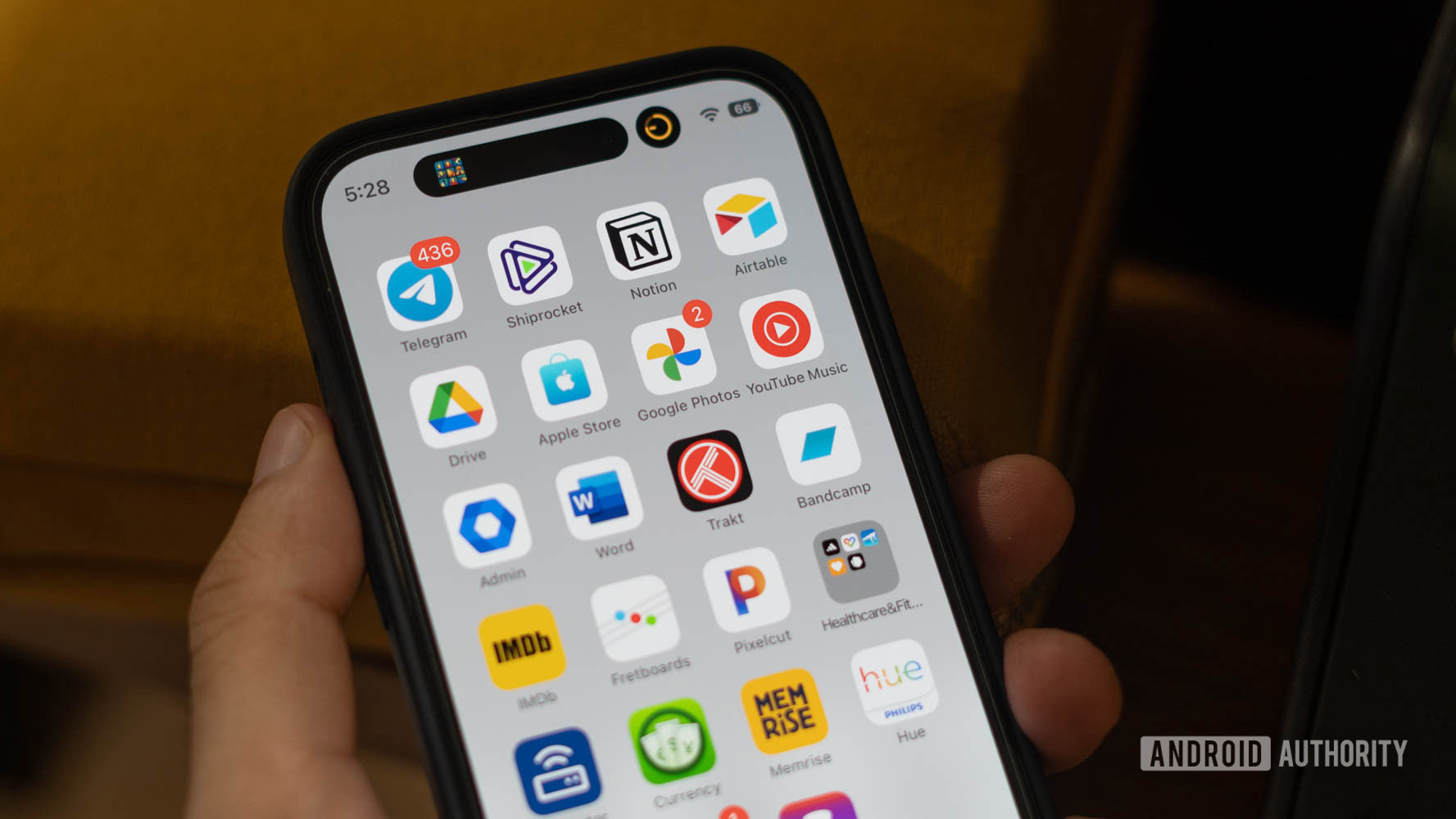
All four new iPhones run iOS 16, which has a few new tricks up its sleeve. It’s much more customizable than previous versions of the OS. For example, you can add lock screen widgets, change the style and color of your clock, and even tweak how it interacts with your wallpaper. More customizability and features are always a good thing, but it also means that the software is getting cluttered to the point where it’s getting difficult to find what you’re after.
Long-time Apple fans will feel right at home using the latest version of iOS, although the experience can be a bit more challenging for those used to Android phones since the two operating systems are different in many ways.
One of the biggest changes this year is the addition of the Dynamic Island, which is the pill-shaped camera cutout available on the iPhone 14 Pro models. The cutout works together with iOS 16 to offer a set of unique features — it can expand and contract depending on your incoming notifications.

To give you an example, when using Apple Maps and listening to a podcast at the same time, the Dynamic Island shrinks the podcast notification to a small square of artwork, while Apple Maps updates each step of my route in a larger bubble — see image above.
This is just one of many examples. Dynamic Island works best with Apple’s own apps at the moment, but we’ll see support being added to loads of third-party apps soon.
As far as software updates go, iPhones are the best in the business. Like the rest of Apple’s lineup, the iPhone 14 series will get at least six years of OS updates, beating the king of Android — Samsung — which “only” offers four years.
As of March 2023, the iPhone 14 series is currently running iOS 16.3.1, which brings “important bug fixes and security updates” to the devices.
Apple iPhone 14 alternatives
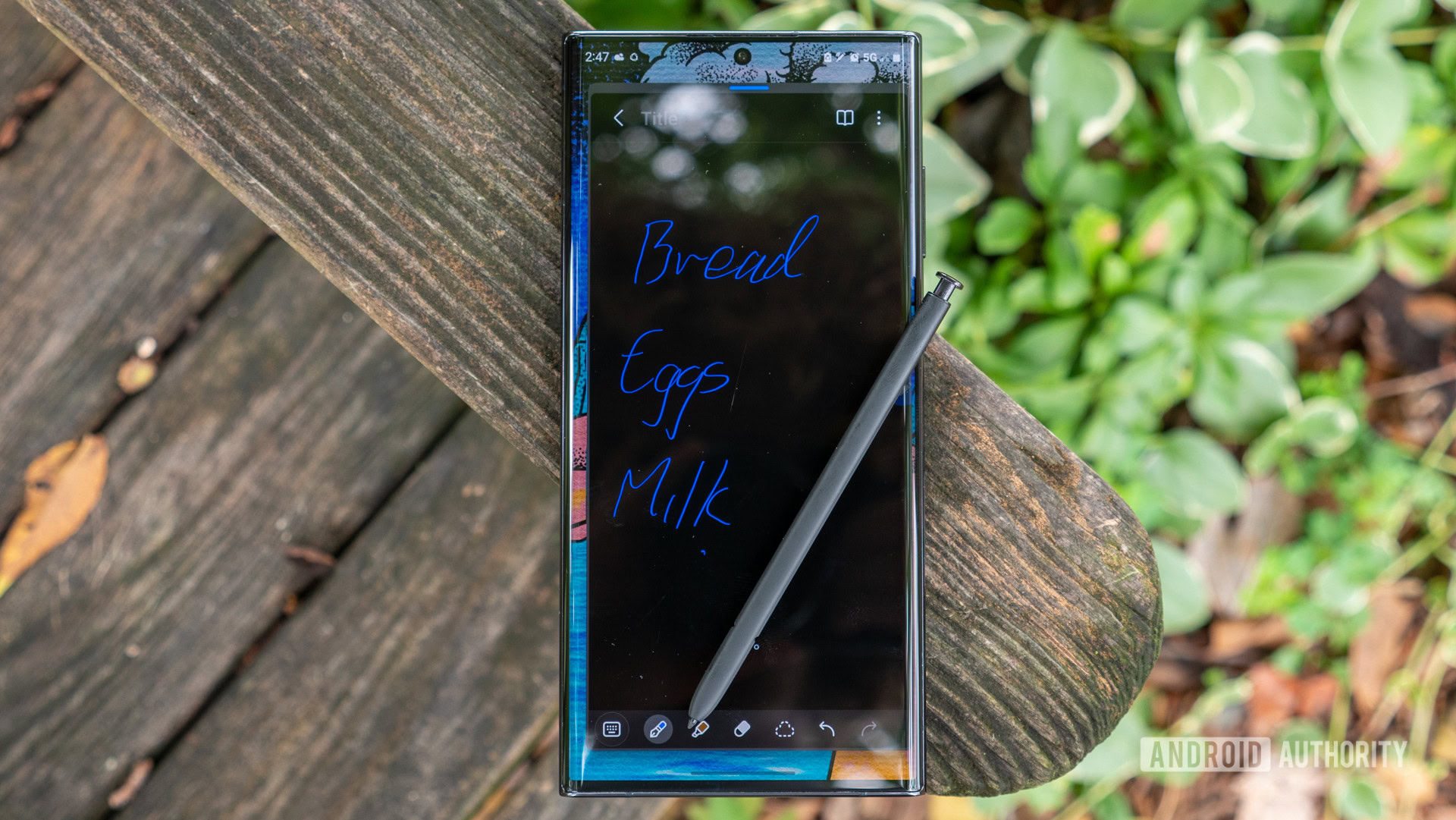
If you want to stay in Apple’s camp, the only alternative to the Apple iPhone 14 series is last year’s iPhone 13 series (from $699.99 at Best Buy). You still get high-end specs, great cameras, and great software support at a lower price point. You are giving up the Dynamic Island, the always-on display, and the faster chipset available in the iPhone 14 Pro models, though, as well as an improved camera system.
When it comes to Android, the choices are plentiful. The best alternative for most would be the Galaxy S23 series (from $799.99 at Samsung) which offers plenty of upgrades over the iPhone 14 phones. You get faster charging, bigger batteries, and the addition of the S Pen if you opt for the S23 Ultra. However, the software promise isn’t as good as with Apple.
Then there’s the Google Pixel 7 ($599 at Amazon) and Pixel 7 Pro ($799 at Amazon), which bring upgraded chipsets over the Pixel 6 line. You’ll also get similar-sized displays as that of the iPhone 14 Plus/Pro Max, and a unique design that stands out in the smartphone world.
Then there’s the OnePlus 10 Pro ($449.99 at Amazon), which is cheaper now than it was at launch, making it more interesting to potential buyers. It offers a bit less overall since the unlocked version doesn’t have an IP rating and the cameras aren’t as good, but you do get faster charging and a few other bells and whistles. Alternatively, the OnePlus 11 ($699 at Amazon) brings a slightly better camera array for a lower starting price.
Those looking for something different should take a look at the Galaxy Z Fold 4 ($1349.99 at Amazon) as well as the Galaxy Z Flip 4 ($999.99 at Amazon). It’s the foldable nature of these two devices that makes them interesting, although you still get great performance, among other things.
Check out a few other options in our dedicated best Apple iPhone alternatives post.
Where to buy the phones
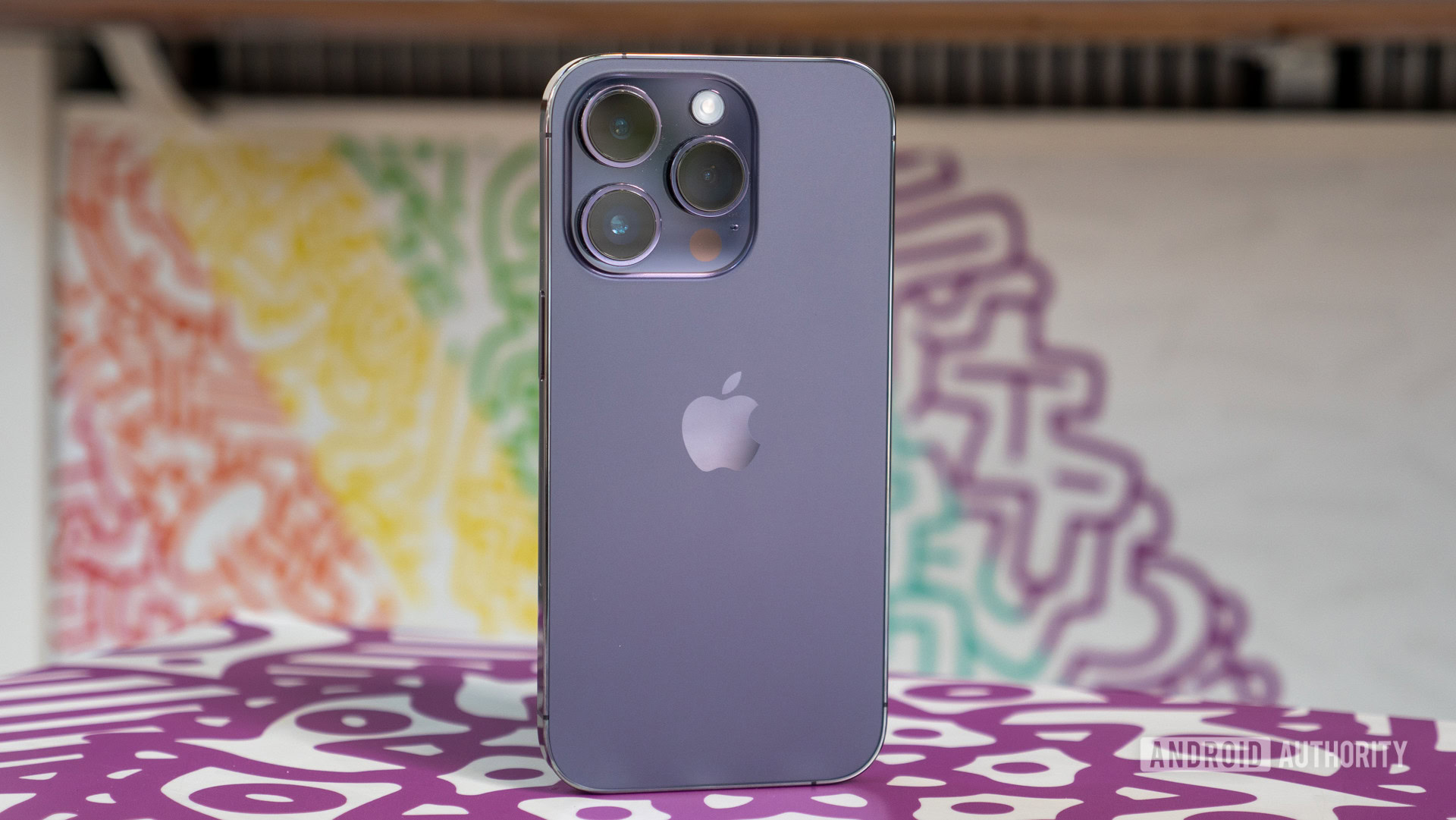
- Apple iPhone 14: Starts at $799 / £849 / €999
- Apple iPhone 14 Plus: Starts at $899 / £949 / €1,149
- Apple iPhone 14 Pro: Starts at $999 / £1,099 / €1,299
- Apple iPhone 14 Pro Max: Starts at $1,099 / £1,199 / €1,449
You can get the latest iPhone series from various retailers including Apple itself, Walmart, Best Buy, and many others. You can also get the phones from all the major carriers like T-Mobile, AT&T, and Verizon.
The Apple iPhone 14, 14 Pro, and 14 Pro Max are already available, while sales of the iPhone 14 Plus officially kick off on October 9. However, you can already pre-order it today.

Updated 12MP camera
Large-display base model iPhone

Upgraded main camera
Dynamic Island

Top iPhone 14 questions and answers
The iPhone 14 series in the US does not have a SIM card slot — all models support eSIM. In other markets, the SIM card slot is still present.
No, the iPhone 14 phones do not come with a charger in the box.
Yes, the iPhone 14 series supports both sub‑6 GHz and mmWave technology.
No, the iPhone 14 series does not support expandable storage.
Not as fast as a lot of their competitors. In our testing, the iPhone 14’s battery went from zero to full in about 100 minutes, while the iPhone 14 Pro was a little bit faster at 80 minutes. For reference, a full charge takes about 50 minutes on the Galaxy S22 Plus and 35 minutes on the OnePlus 10 Pro.
Cable, yes. Charging block, no. None of this generation’s iPhones are shipping with a charger, part of Apple’s commitment to carbon neutrality and also getting you to buy more stuff.

